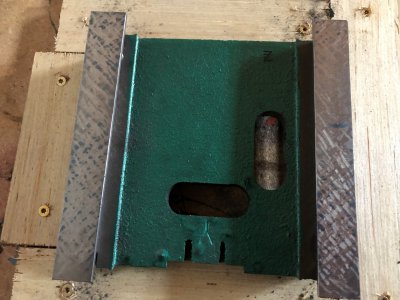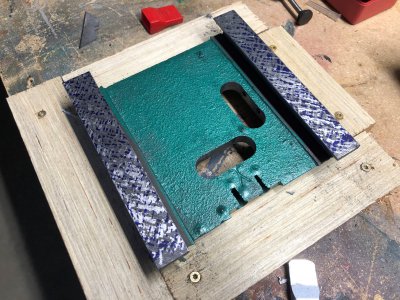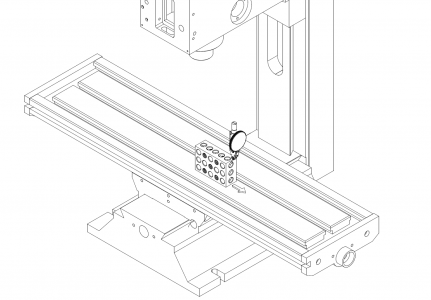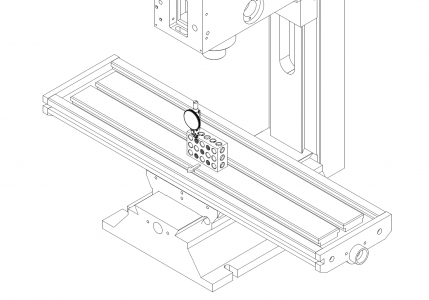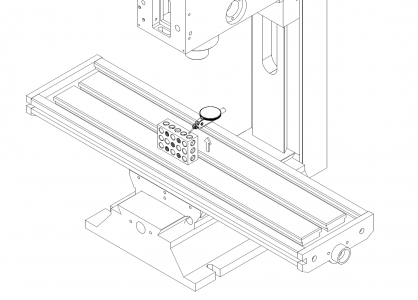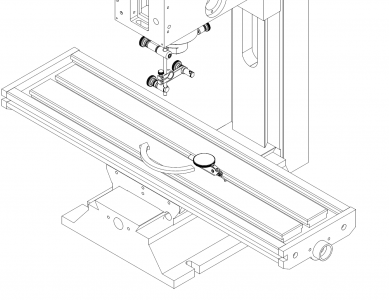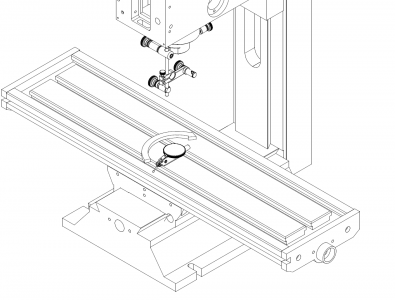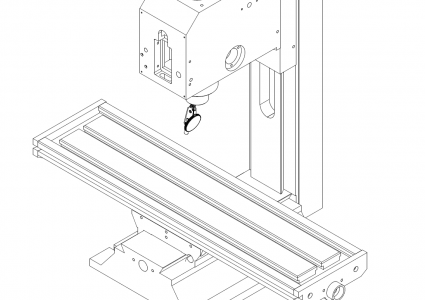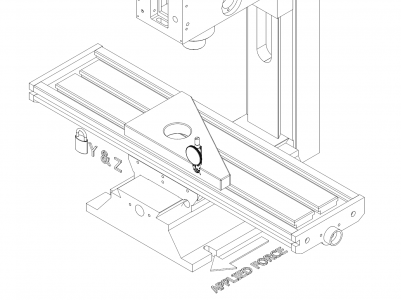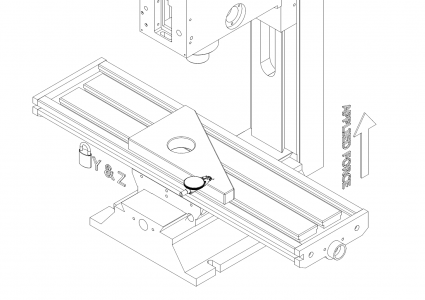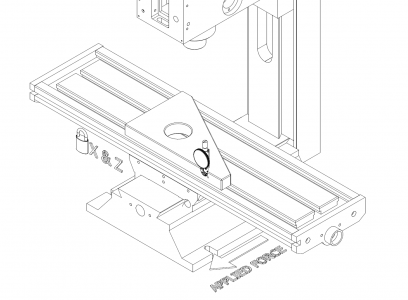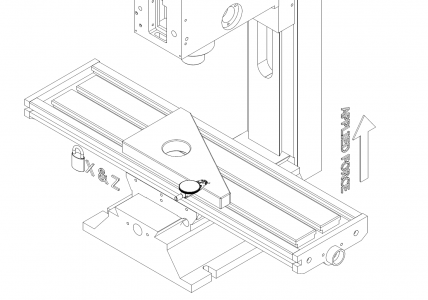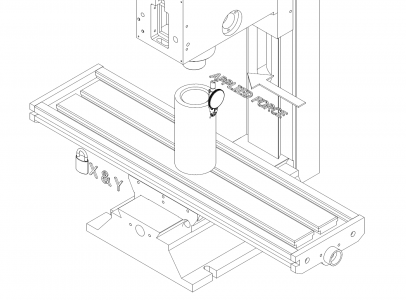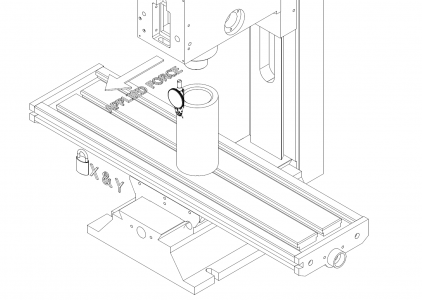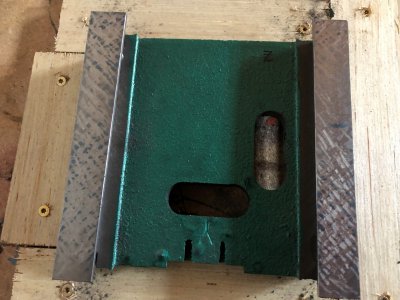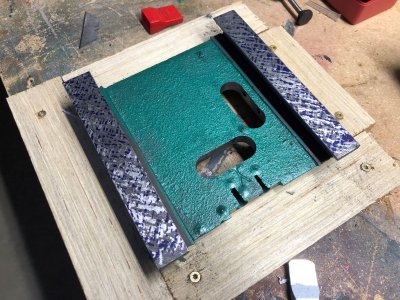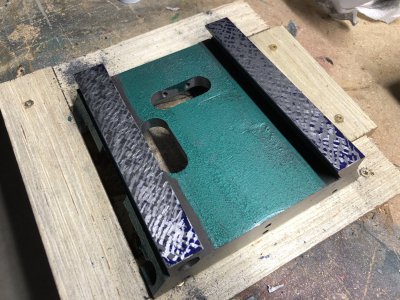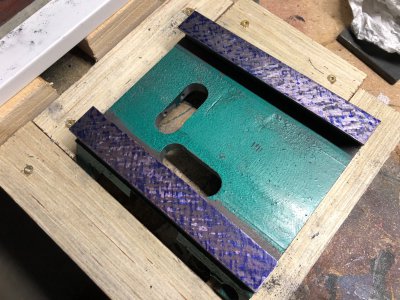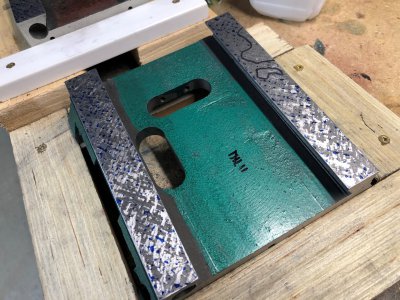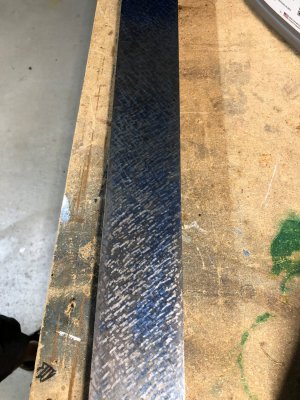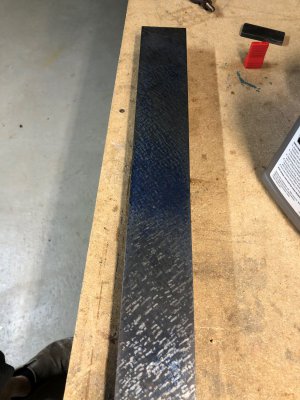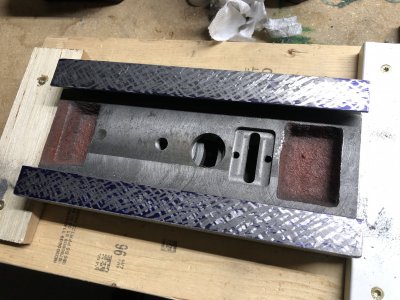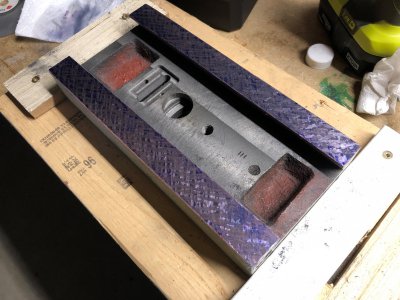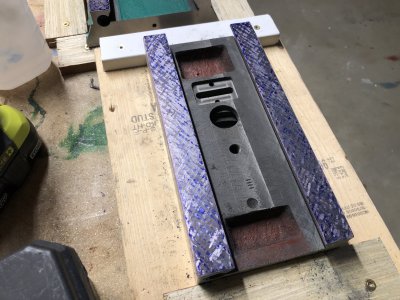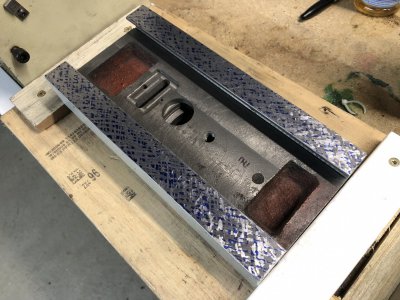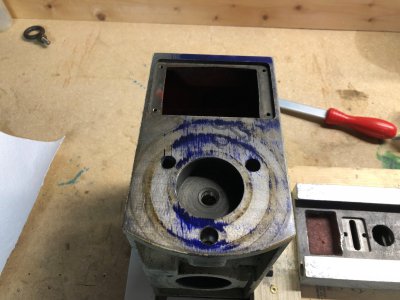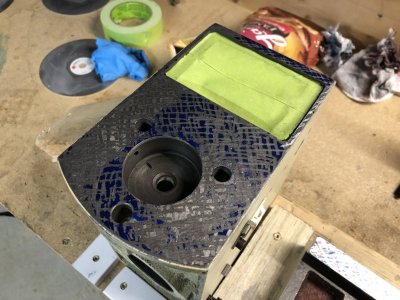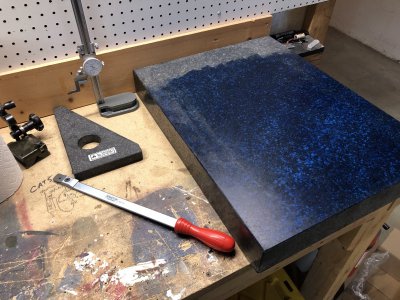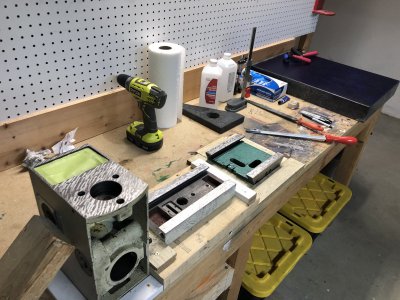Squareness X to Y
This measurement represents the accuracy of the orthogonality of the ways of the saddle. It is a measure of how square the X and Y axes are to each other.
The standard to which the measurements were taken was a Shars brand 6x10" granite square. This has a squareness accuracy of +/-0.0001" over the full length of the square.
The granite square was first indicated true in the X axis and gently clamped to the table to prevent accidental movement, then the indicator was moved to the Y axis face and the Y axis was jogged. Full indicator movement was noted .
For this measurement, the value was only reported for the movement while the saddle was fully supported by the base. The saddle can overhang the front of the base for additional travel, however accuracy dramatically declines likely due to looseness in the Y axis gibs and ways.
Squareness is represented as a error over 12" since this error is angular. The travel of the Y axis is less than 12", so the value is normalized to 12" travel for easy comparison to other axes. The actual measurement was 0.0007" over 5".
Squareness X to Y is
0.0017" per 12"
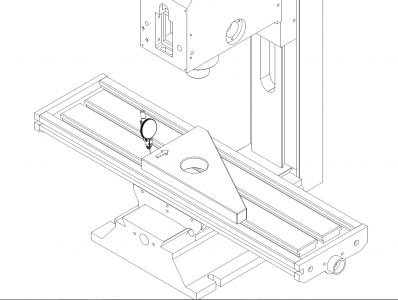 Squareness X to Z, Wobble of Z slide in X direction
Squareness X to Z, Wobble of Z slide in X direction
This measurement represents the orthogonality of the column to the table top in the X direction. This can also be stated as how much the column leans to the left or right.
The standard to which the measurements are taken is a Fowler 3x6" cylindrical square with a stated accuracy of +/- 0.0001".
The cylindrical square was cleaned and placed on a gently stoned and cleaned table. The indicator was aligned in the X direction and jogged in Y to find the high point of reading. Then the X and Y were locked and the indicator was jogged in the Z direction.
Squareness is represented as a error over 12" since this error is angular. The travel of the Z axis is less than 12", so the value is normalized to 12" travel for easy comparison to other axes. The actual measurement was 0.0037" over 5.05".
The wobble in the indicator reading above or below the straight line reading from end to end represents the wobble or straightness error in the Z ways in the X direction. Overall test distance is 5.4". Wobble is cyclic with a 0.2" period indicating a bent screw
Squareness X to Z is
0.0088" per 12"
Straightness/Wobble of Z slide in X direction is
0.0020"
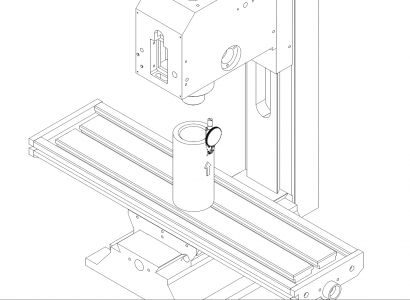 Squareness Y to Z, Wobble of Z slide in Y direction
Squareness Y to Z, Wobble of Z slide in Y direction
This measurement represents the orthogonality of the column to the table top in the Y direction. This can also be stated as how much the column leans forward to back.
The standard to which the measurements are taken is a Fowler 3x6" cylindrical square with a stated accuracy of +/- 0.0001".
The cylindrical square was cleaned and placed on a gently stoned and cleaned table. The indicator was aligned in the Y direction and jogged in X to find the high point of reading. Then the X and Y were locked and the indicator was jogged in the Z direction.
Squareness is represented as a error over 12" since this error is angular. The travel of the Z axis is less than 12", so the value is normalized to 12" travel for easy comparison to other axes. The actual measurement was 0.0005" over 5.23".
The wobble in the indicator reading above or below the straight line reading from end to end represents the wobble or straightness error in the Z ways in the Y direction. Overall test distance is 5.4". Wobble is cyclic with a 0.2" period indicating a bent screw
Squareness Y to Z is
0.0010" per 12"
Straightness/Wobble of Z slide in Y direction is 0.0020"
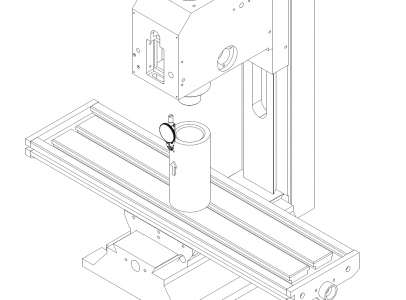
Straightness/Wobble of X slide in Y direction
This measurement represents the combined contributions of a bent ballscrew, table yaw, and a little bit of table roll. Way looseness also affects this measurement.
This measurement was also taken against the Shars granite square.
The square is first aligned in the X direction such that the indicator reads 0 at both ends of the square. The Y axis is locked. The X axis is then jogged back and forth over the length of the square and the total indicator reading (max-min) is reported. If the ways were straight, then this should show zero indicator movement. Overall test distance is 8"
Straightness/Wobble of X slide in Y direction is
0.0007"
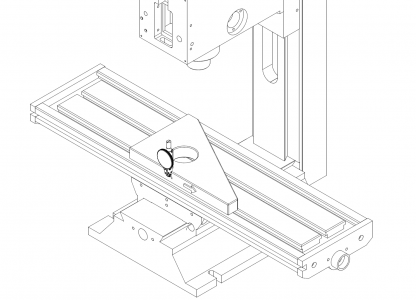 Straightness/Wobble of X slide in Z direction & Table Wedge in X
Straightness/Wobble of X slide in Z direction & Table Wedge in X
This measurement represents the combined contributions of a bent ballscrew, table wedge, and table roll. Way looseness also affects this measurement.
This measurement was also taken against the Shars granite square.
The Y axis is locked. The indicator is placed on the top face of the granite square and zeroed at the far left end. The X axis is then jogged back and forth over the length of the square and the total indicator reading at the far right is noted as well as the movement of the indicator along the length of travel.
The end to end reading is the table wedge or pitch error in X. This reading is heavily influenced by the slop in the X axis ways and the weight of the table under gravity. The wobble in the indicator reading above or below the straight line reading from end to end represents the wobble or straightness error in the X ways in the Z direction. Table wedge is normalized to error over 12" since it is an angular error. Actual measurements were taken over a 9.4" test distance. Measurements were always taken over distances divisible by 0.2" to avoid contributions of a bent ballscrew.
X table wedge is
0.0037" over 12"
Straightness/Wobble of X slide in Z direction is
0.0024"
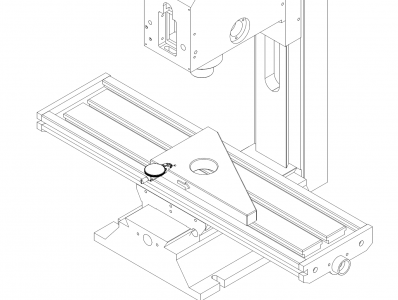
Straightness/Wobble of Y slide in X direction
This measurement represents the combined contributions of a bent ballscrew, table yaw, and a little bit of table roll. Way looseness also affects this measurement.
This measurement was also taken against the Shars granite square.
The square is first aligned in the Y direction such that the indicator reads 0 at both ends of the square. The X axis is locked. The Y axis is then jogged back and forth over the length of the square and the total indicator reading (max-min) is reported. If the ways were straight, then this should show zero indicator movement. Overall test distance is 5"
Straightness/Wobble of X slide in Y direction is
0.0003"
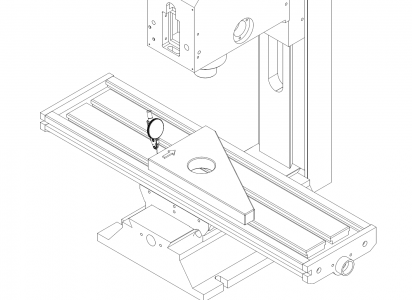 Straightness/Wobble of Y slide in Z direction & Table Wedge in Y
Straightness/Wobble of Y slide in Z direction & Table Wedge in Y
This measurement represents the combined contributions of a bent ballscrew, table wedge, and table roll. Way looseness also affects this measurement.
This measurement was also taken against the Shars granite square.
The X axis is locked. The indicator is placed on the top face of the granite square and zeroed at the far left end. The Y axis is then jogged back and forth over the length of the square and the total indicator reading at the far right is noted as well as the movement of the indicator along the length of travel.
The end to end reading is the table wedge or pitch error in Y. This reading is heavily influenced by the slop in the Y axis ways and the weight of the table under gravity. The errors are highly amplified when the saddle is not fully supported by the base, so measurements were stopped when the saddle reached the end of the base. The wobble in the indicator reading above or below the straight line reading from end to end represents the wobble or straightness error in the Y ways in the Z direction. Table wedge is normalized to error over 12" since it is an angular error. Actual measurements were taken over a 5.4" test distance. Measurements were always taken over distances divisible by 0.2" to avoid contributions of a bent ballscrew.
Y table wedge is
0.0015" over 12"
Straightness/Wobble of Y slide in Z direction is
0.0006"
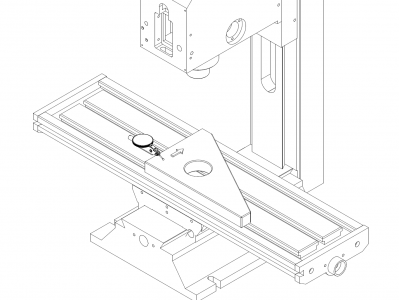
To be continued...
